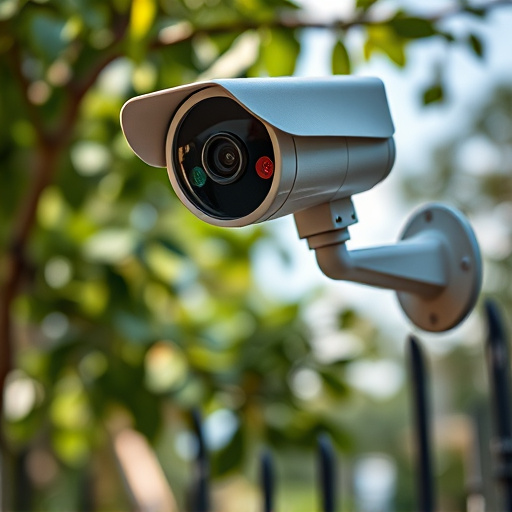The best placement for fake security cameras is in clear view at eye level or slightly elevated on walls/ceilings, mimicking real security setups. Strategically position them near entry points and valuable assets, considering lighting & shadows to enhance overall security without capturing footage. Avoid blocking their lines of sight & integrate them with actual security features for maximum deterrence.
“Uncover the power of dummy surveillance cameras with our comprehensive guide on the best placement techniques. Learn how these fake security devices can deter criminals and enhance your home or business’s safety without breaking the bank. From understanding their basic functions to crafting a strategic placement strategy, we’ll explore key factors, common mistakes to avoid, and creative layouts for optimal visual deterrence. Discover the art of using dummy cameras as a game-changer in your security arsenal.”
- Understanding Dummy Cameras: A Quick Guide
- Key Factors for Optimal Placement Strategy
- Common Mistakes to Avoid in Camera Positioning
- Best Practices for Visual Deterrence
- Enhancing Security: Creative Camera Layouts
Understanding Dummy Cameras: A Quick Guide
Dummy surveillance cameras, also known as fake security cameras, are a clever and cost-effective way to deter crime and enhance security. Unlike their functional counterparts, these devices do not capture actual footage but serve as powerful visual deterrents. Understanding where to place them strategically is key to maximizing their effectiveness.
The best placement for fake security cameras is often in plain sight, high up on walls or ceilings, mimicking the standard positioning of real surveillance equipment. This simple trick can make would-be intruders think twice before attempting any malicious activities. By placing these dummy cameras at entry points, such as doors and windows, or in areas known for previous security issues, you create a psychological barrier that discourages criminal behavior.
Key Factors for Optimal Placement Strategy
When determining the best placement for dummy surveillance cameras, several key factors come into play. The primary goal is to create an illusion of comprehensive surveillance while maintaining realism and avoiding detection. Location is crucial; strategically place the fake cameras in areas where actual security devices would be expected, such as near entrances, exits, and high-value assets or areas of interest. This includes windows, doors, and valuable equipment or inventory.
Consider the environment and context to ensure the dummy cameras blend seamlessly. Factor in lighting, both natural and artificial, to make the fakes look realistic and avoid shadows that could give them away. Additionally, take into account the camera’s field of view, ensuring it covers a significant portion of the area you want to monitor without appearing too obtrusive or out of place. The placement strategy should also consider human behavior and movement patterns, positioning cameras where people are likely to pass by or gather.
Common Mistakes to Avoid in Camera Positioning
Placing dummy surveillance cameras is an art, and knowing the common mistakes to avoid can significantly enhance their effectiveness. One of the biggest blunders is overlooking the camera’s line of sight. Just like real security systems, fake cameras must have a clear view of the area you wish to monitor. Blocked or obstructed views will render them useless. For instance, placing a dummy camera behind a tree or sign can defeat its purpose as potential criminals won’t be deterred by something they can’t see.
Another error is failing to consider height and angle. Cameras should be positioned at strategic heights, simulating real surveillance. Low-hanging cameras are easily tampered with, while ones placed too high might not capture crucial details. The best placement for fake security cameras is often at eye level or slightly elevated, offering a comprehensive view without appearing overly suspicious. Always remember, the goal is to create an illusion of being watched, not necessarily to record every detail.
Best Practices for Visual Deterrence
When considering the best practices for visual deterrence using dummy surveillance cameras, placement is key. Strategically positioning these fake cameras can significantly enhance security while maintaining an aesthetic appearance. Opt for locations that offer clear lines of sight across critical areas, such as entrances, exits, and high-value assets. Mounting them at eye level or slightly elevated ensures maximum visibility, deterring potential intruders without appearing overly obtrusive.
The best placement for fake security cameras is often in plain sight but discreetly integrated into the environment. Place them near actual security features like real cameras or signs indicating surveillance to reinforce the illusion of a comprehensive security system. Regular maintenance and realistic design elements further enhance their deterrent effect, making would-be criminals think twice before attempting any unauthorized actions.
Enhancing Security: Creative Camera Layouts
Surveillance cameras, even dummy or fake ones, can significantly enhance security measures by creating a perception of constant observation. When planning their placement, consider strategic and creative layouts to maximise their effectiveness. The best placement for fake security cameras is in high-risk areas that require close monitoring. Position them at entry points like doors, windows, and gates, as well as in open spaces where unauthorized activities might occur.
A clever camera layout involves grouping several dummy cameras together to create a network of visual deterrents. This arrangement sends a strong message to potential intruders, suggesting that any activity will be quickly detected and recorded. Additionally, mounting cameras at different angles and heights adds depth to the surveillance system, making it harder for anyone to remain unseen.
Dummy surveillance cameras, when strategically placed, can significantly enhance security and deter potential threats. By understanding the key factors and best practices outlined in this article, you can create an effective visual deterrent system. Avoid common mistakes and embrace creative layouts to maximise the impact of your fake security cameras. Remember, the best placement for these devices is one that not only deters crime but also provides peace of mind.
